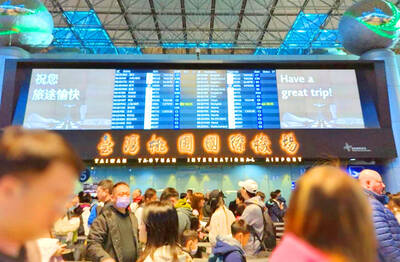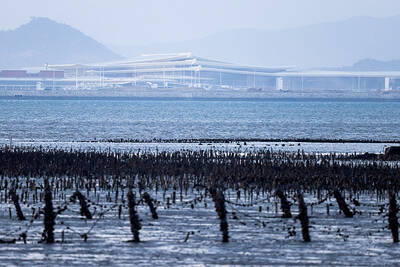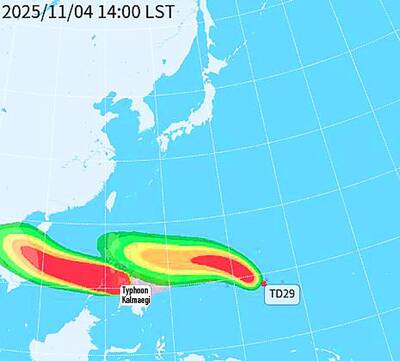The government plans to make Hanyu Pinyin (漢語拼音) the standard system of Romanization nationwide starting on Jan. 1, an official with the Ministry of Education said yesterday.
Government agencies will be compelled to adopt Hanyu Pinyin, a Chinese Romanization system developed by the People’s Republic of China, Chen Hsuch-yu (陳雪玉), executive-secretary and senior inspector of the ministry’s National Languages Committee (NLC), said in a telephone interview.
While the public will be widely encouraged to use the system, individual preferences on which Romanization system to use will be respected when it comes to personal matters such as the spelling of their surnames, Chen said.
To facilitate the change, “we will refer the Guidelines of Using Chinese Phonetic Spelling (中文譯音使用原則) to the Executive Yuan for review within a month,” Chen said.
The guidelines, enacted by the former Democratic Progressive Party (DPP) government in 2002, stipulate that the official Romanization system for Chinese in the country is Tongyong Pinyin (通用拼音), but its use is not mandatory.
Chen said the ministry would soon convene a meeting of local governments and central government agencies to sort out rules and regulations that would need to be revised to conform to the change. These include rules on naming roads and passport regulations, among others.
The move came after a proposal that Hanyu Pinyin be adopted was approved at a Cabinet meeting convened by Minister Without Portfolio Ovid Tzeng (曾志朗) on Tuesday.
Tzeng said the ministry made the proposal in line with the government’s aim to enhance the country’s international competitiveness.
An official with the Research, Development and Evaluation Commission quoted Tzeng as saying at the meeting that the change should not be a problem and has the support of Premier Liu Chao-shiuan (劉兆玄), who is expected to ratify the proposal after the intergovernmental meeting.
The NLC said it would provide a Hanyu Pinyin guide on its Web site to show the equivalent pronunciation in the traditional phonetic system.
“The guide can help the public and civil servants learn how to use Hanyu Pinyin at a glance,” Chen said.
So far, Taipei City, Hsinchu City and Kinmen County are the only three municipalities that use Hanyu Pinyin.
“We know there might be objection to using the Hanyu Pinyin system,” Chen said, “but we ask the protesters to realize that this would enable Taiwan to become better connected with the rest of the world.
“It would also help foreigners in Taiwan, who would only need to learn one transliteration system,” she said.
ADDITIONAL REPORTING BY JENNY W. HSU

Three Taiwanese airlines have prohibited passengers from packing Bluetooth earbuds and their charger cases in checked luggage. EVA Air and Uni Air said that Bluetooth earbuds and charger cases are categorized as portable electronic devices, which should be switched off if they are placed in checked luggage based on international aviation safety regulations. They must not be in standby or sleep mode. However, as charging would continue when earbuds are placed in the charger cases, which would contravene international aviation regulations, their cases must be carried as hand luggage, they said. Tigerair Taiwan said that earbud charger cases are equipped

Foreign travelers entering Taiwan on a short layover via Taiwan Taoyuan International Airport are receiving NT$600 gift vouchers from yesterday, the Tourism Administration said, adding that it hopes the incentive would boost tourism consumption at the airport. The program, which allows travelers holding non-Taiwan passports who enter the country during a layover of up to 24 hours to claim a voucher, aims to promote attractions at the airport, the agency said in a statement on Friday. To participate, travelers must sign up on the campaign Web site, the agency said. They can then present their passport and boarding pass for their connecting international

UNILATERAL MOVES: Officials have raised concerns that Beijing could try to exert economic control over Kinmen in a key development plan next year The Civil Aviation Administration (CAA) yesterday said that China has so far failed to provide any information about a new airport expected to open next year that is less than 10km from a Taiwanese airport, raising flight safety concerns. Xiamen Xiangan International Airport is only about 3km at its closest point from the islands in Kinmen County — the scene of on-off fighting during the Cold War — and construction work can be seen and heard clearly from the Taiwan side. In a written statement sent to Reuters, the CAA said that airports close to each other need detailed advanced

WEATHER Typhoon forming: CWA A tropical depression is expected to form into a typhoon as early as today, the Central Weather Administration (CWA) said yesterday, adding that the storm’s path remains uncertain. Before the weekend, it would move toward the Philippines, the agency said. Some time around Monday next week, it might reach a turning point, either veering north toward waters east of Taiwan or continuing westward across the Philippines, the CWA said. Meanwhile, the eye of Typhoon Kalmaegi was 1,310km south-southeast of Oluanpi (鵝鑾鼻), Taiwan’s southernmost point, as of 2am yesterday, it said. The storm is forecast to move through central